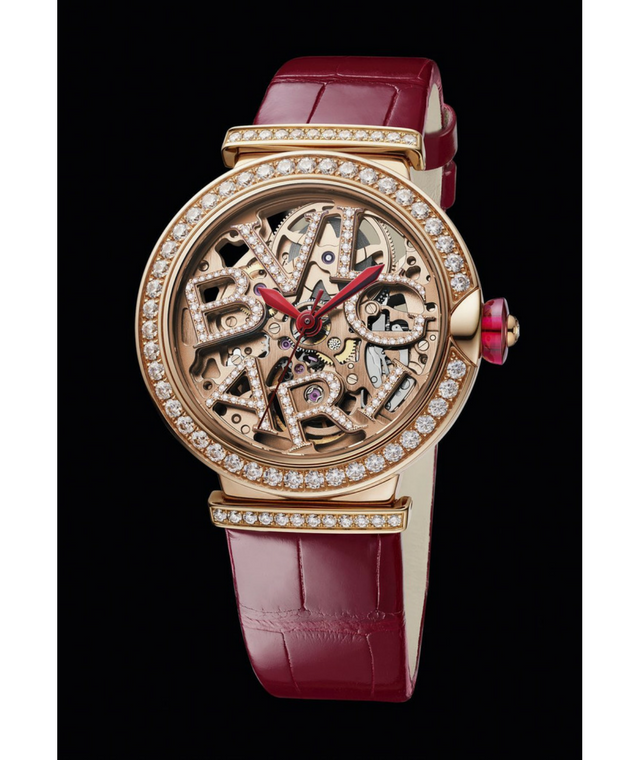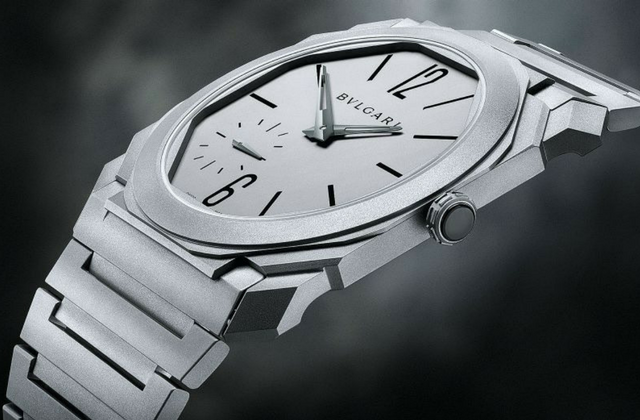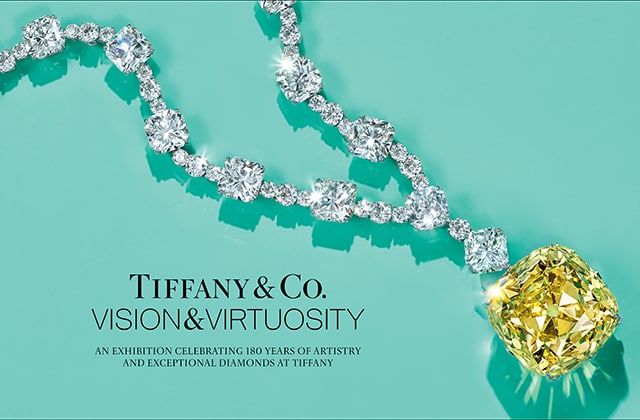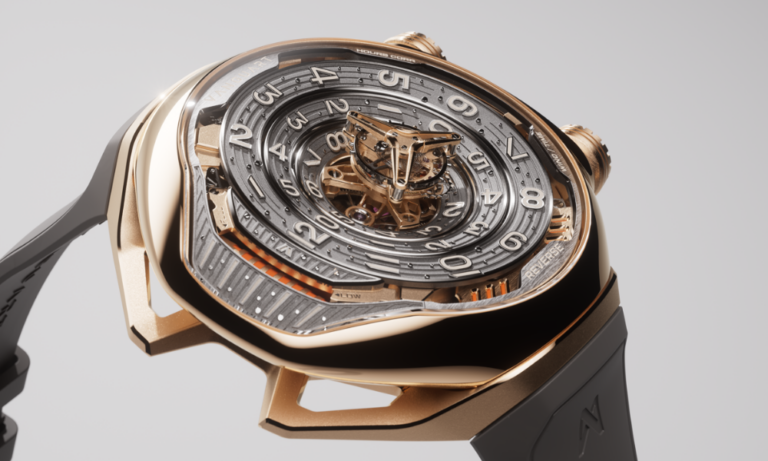Fabrizio Bounamassa Stigliani first joined the house of Bvlgari in 2001 after submitting designs to the Bvlgari Design Centre in Rome and being personally hired by Paolo Bvlgari, the brand’s CEO. Some 17 years later and Fabrizio has risen through the ranks at the esteemed house to the position he holds today: Creative Director of Watches. He lives in Switzerland (he moved there in 2009 to “improve the design, the quality of certain processes” in order to “develop the manufacturing side [of the business] and to develop the brand in a certain way”) but visits Dubai four to five times each year, describing it as both “a very important market” and “a nice place to relax.”
It certainly is both, although the latter is startlingly apparent as we sit down to chat in the Bvlgari Hotel’s Yacht Club with its floor-to-ceiling glass windows boasting uninterrupted views of the ocean…
What changes have you implemented on the design side of things?
You can see today on the design side of things with Finissimo, LVCEA, Serpenti — there’s great improvement. We stay very focused on our three pillars and we continue to develop our iconic watches. The core of our assortment for the foreseeable future will be Octo, LVCEA and Serpenti. You cover three different areas with these. Within Octo we have the Octo Roma, the Finissimo and the original; in LVCEA we have the LVCEA and the LVCEA with Tubogas; and in the Serpenti we have seven different ways to wear the Serpenti watch, so you can cover a lot of different needs for different clients. This approach is very important and makes a lot of sense with the brand. It’s really important to stay focused.
Finissmo, for example, completely changed the perception of some watch lovers and collectors about Bvlgari as a watchmaker.
Why is that?
Because this kind of piece is a grand complication watch. When you combine the automatic movement with the Finissimo execution you talk about a grand complication watch. It’s something really unique and you have just three or four brands that are able to produce this kind of movement in-house and you have just one brand that is able to invent this segment. Before Bvlgari and the Finissimo, formal watches were sleeping beauties. The watch was the same as it had been for a long time with the same shape, the same dial and you had to read the logo on top of the dial otherwise you could be mistaken as to the brand of the watch. Only Bvlgari can play with materials in this segment. The minute repeater represents the heritage of the Swiss watchmaking know-how and the carbon fibre represents the avant-garde in terms of materials. When you combine them together, you have a sparkle, you have a new watch. For me, it’s important not just because we made a new watch but because we made a different way to wear a watch. So it’s not just an innovation in terms of material, but also in typology and the way in which to wear a timepiece.
One of the watches you introduced at Basel was the LVCEA and it had the Bvlgari brand name spelt out in the watch face which was revolutionary…
Often my design inspiration comes from the brand itself. Bvlgari produced in the late ’80s a Bvlgari Bvlgari watch with the skeleton version movement with the letters on the back case of the movement. There’s a strong trend today in the market of ladies’ watches that they’re starting to appreciate the mechanical components and the movements. But how do we address this in the Bvlgari way? The idea was to revamp this movement in a different way. So we made our base calibre, we made a skeleton version and we cut the bridges with the exact same shapes of the letters but this time the letters are on the dial side. And this time you can play with the letters like the indexes on the dial. You can have different colours, different finishings, with diamonds or without, so this is interesting because it becomes a modular platform. At the same time you’re talking about a mechanical, automatic movement that we produce in-house.

You touched on this earlier but to circle back for a second — do you think women’s approach to watches is changing? How?
Yes. Even on the technical side, we have more and more ladies that are starting to appreciate the mechanical aspects of the watches. This is often because their boyfriends or husbands buy watches for them and the men have to be convinced by the technical features.
Going back to Basel now, it was a big year for the brand as you set two world records with the Diva and Octo Finissimo models. Tell us a little more about that…
Diva is the thinnest minute repeater for ladies and celebrates 100 years of high jewellery watches for Bvlgari in the ladies segment and the Octo is the thinnest automatic watch in the world again (after another brand beat our previous model for a few months). [The Octo has] three world records in one watch: it’s the thinnest automatic watch in the world, it’s the thinnest tourbillon movement in the world and it’s the thinnest automatic tourbillon in the world. You can split the tourbillon in the normal winding and in the automatic movement so we beat both records.
Wow. How long in the making was that timepiece?
With these designs, when you start, you never know when you’re going to finish. In certain instances you need to put the watch on the market but you have to imagine that, for example, to develop this watch you need five or six years more or less.
There’s so much innovation behind the designs at Bvlgari. How do you ensure you’re always at the forefront of innovation?
For me, innovation is not about only playing with exotic materials. Today, you can contact any university and you can have your own material. For me, it’s not fun enough. It’s a little bit easy. It’s more important and it’s more difficult to change the way to wear a watch. This was the idea behind the Finissimo, to have a wearable, contemporary complication. Whereas, before Finissimo, you used to have the same watches in the formal segment, but today after five years of world records for Bvlgari and after five years of playing with common materials in a different way, we have a lot of brands that have come back in this segment and started to make their own interpretations about formal watches and ultra-thin executions. This is very important because Bvlgari is the trendsetter, like in the 80s with the very incredible design of the watches, and today again Bvlgari is able to talk a different language.
Innovation for me is a state of mind. It’s not just something you can add to your product at the end of the process. You have to be able to think. Your thoughts have to be different, innovative. So when we talk about the new Finissimo watch we talk about, for the first time, a formal watch that’s cool and urban made in an Italian way to wear a grand complication watch. It’s strong enough for everyday use but thin enough to be your private pleasure, something that you can hide under the shirt and something that allows you to know that you are wearing one of the most sophisticated watches in the world. This is the latest sophistication in elegance and luxury.
Innovation for me is a state of mind. It’s not just something you can add to your product at the end of the process. You have to be able to think. Your thoughts have to be different, innovative.
Do you feel as though there’s been a transition in the way people wear watches in the sense that it used to be a formal piece of jewellery but now it is worn almost every day?
I don’t know. I’ll tell you something, after the five years of Finissimo, we have a lot of watch lovers and collectors that appreciate this watch because it’s unique. I’m a designer and for me it’s very important to play with the heritage of the brand and to play with the iconic sense of the brand to reinvent the brand.
You can find innovations in the Bvlgari heritage, in the Bvlgari DNA you can find porcelain and steel in fine jewellery, aluminum and wood in watches. In our DNA we have this out-of-the-box approach so again, gold, steel, titanium, carbon, everybody knows these materials in the watchmaking industry but maybe for the first time you combine this kind of avant-garde with the heritage of the watchmaking know-how.
Bvlgari is a unique brand because it comes from Rome. It means something different. We grew up surrounded by beauty, we come from Rome, we are Italians and we have a different perception about beautiful things, a different sensibility and we are one of the most well-known designers around the world. I have to play with these elements and I have to turn the constraints into opportunities. So minute repeaters, they have to make a very loud sound. If I use gold for the thinnest minute repeater, the sound is not enough. So what can I do? This is the constraint. The opportunity is the titanium. No polished finishing, just raw finishing, that tells you ‘I am different’. This allows me to combine the contemporary and heritage in state of the art watchmaking. So it’s unique because it comes from Rome and it is able to uniquely blend Italian design rules with Swiss watchmaking know how.
In the Italian industrial design history, the constraints often act as the turning point of the project and drive the aesthetics.
You never know when the ideas will come! It’s impossible to manage creativity. You can only nourish it. And you can do this through your DNA, your experience, your business trips, your books. For me, it’s even a matter of touch. This is design: a unique blend of technicality, arts and experience.
There’s so much craft and expertise that goes into traditional watchmaking. Do you think traditional watchmaking is under threat from the introduction of smart watches at all?
Smart watches were funny. At the beginning, three, four years ago, the Swiss guys went crazy, like in the ’70s with the digital watches that came from Japan. [They were saying] ‘Now it will be tough, who’s going to care about mechanical watches?’ Smart watches are a part of the market. The client is completely different. You have two different types of clients in smart watches — the digital and electronic device lovers and people who care just about technical features. Everybody got the first ones, but everybody now understands that it’s impossible to read the message, a lot of people now need glasses thanks to smart watches [laughs] but then they have to buy a second one. Why? To tell me I have to walk for 10 minutes per day, that I have to drink 10 glasses of water a day… it’s become a tool.
Now the situation is a little bit more quiet, smart watches are a part of the game and it’s for young clients that love to be connected every moment of their life, love to charge another electronic device in the night [laughs] and love electronic devices. The problem is that luxury is different and when you grow up and you start to have your income, you start to appreciate the timeless element, and the mechanical and the physical aspects of a product. You start to wear your grandfather or your father’s watch because it’s part of your heritage. This is luxury products: heritage and savoir-faire. It’s something you pass to someone. The problem of the electronic device is that you can’t pass it to someone because after 10 years it doesn’t work.
The smart watch market seems to have drawn in the millennials. What is Bvlgari’s millennial customer like? Is there one?
We have even younger than millennial. That’s why maybe the custom-made trend is so strong because these clients want to be a part of the creative process and they want their own products. This is different than when we were children…
You never know when the ideas will come! It’s impossible to manage creativity. You can only nourish it.
Now in terms of the brand’s Middle Eastern customer, what’s that like?
The Middle East is fantastic because here it’s in the middle of the world and you have a lot of different clients – you have Russians, Europeans, Chinese, Japanese… a lot of different cultures live in the Middle East. But the Middle Easterner has his own style, it’s a part of his history. They love green, it’s a cultural thing. You have to catch some of these elements, otherwise you’ll make mistakes. For us, we make some special editions for the Middle East to talk with some specific clients but we can’t make just one watch for the market. The Bvlagri product has to work worldwide.
The history of the Middle East is so rooted in timepieces and jewellery, which is something that doesn’t exist as strongly in other markets around the world…
I think that maybe we have some of the greatest watch collectors in the world here in the Middle East. It’s very exciting for us because with the Octo Finissimo we started to meet a lot of watch collectors who [are impressed by it]. It’s fantastic because for a lot of watch lovers it’s a surprise that Bvlgari can make watches like this but we have had our manufacturing side for only 20 years which is a short time compared to other brands. But this is Bvlgari – it’s an out-of-the-box approach. You see our products and you know that it’s a different approach. You love it or you don’t, it fits your style or it doesn’t but you can always say these watches are different, are unique. As a designer it’s important for me that our watches are recognisable from afar. If you are obliged to read the logo on top of the dial then I have missed something.





